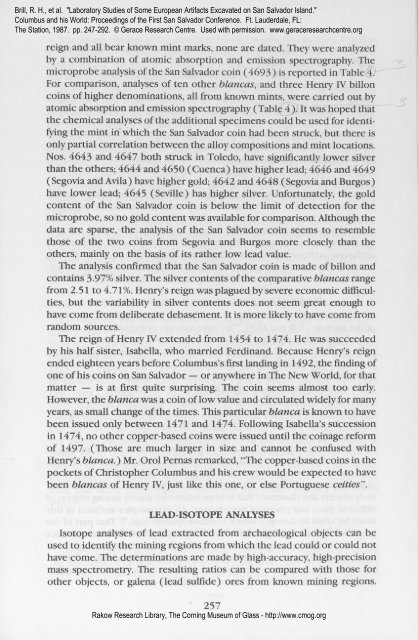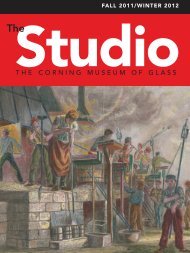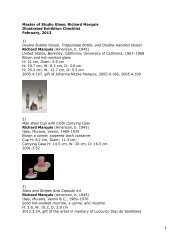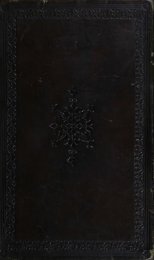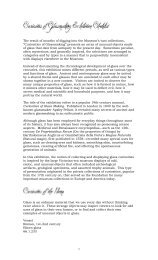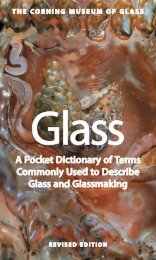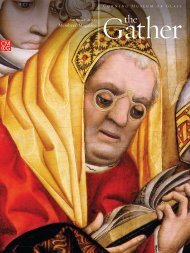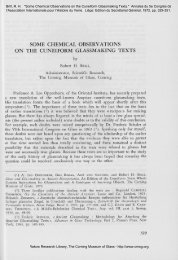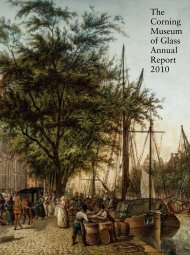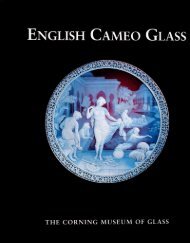"Laboratory Studies of Some European Artifacts Excavated on San ...
"Laboratory Studies of Some European Artifacts Excavated on San ...
"Laboratory Studies of Some European Artifacts Excavated on San ...
You also want an ePaper? Increase the reach of your titles
YUMPU automatically turns print PDFs into web optimized ePapers that Google loves.
Brill, R. H., et al. "<str<strong>on</strong>g>Laboratory</str<strong>on</strong>g> <str<strong>on</strong>g>Studies</str<strong>on</strong>g> <str<strong>on</strong>g>of</str<strong>on</strong>g> <str<strong>on</strong>g>Some</str<strong>on</strong>g> <str<strong>on</strong>g>European</str<strong>on</strong>g> <str<strong>on</strong>g>Artifacts</str<strong>on</strong>g> <str<strong>on</strong>g>Excavated</str<strong>on</strong>g> <strong>on</strong> <strong>San</strong> Salvador Island."<br />
Columbus and his World: Proceedings <str<strong>on</strong>g>of</str<strong>on</strong>g> the First <strong>San</strong> Salvador C<strong>on</strong>ference. Ft. Lauderdale, FL:<br />
The Stati<strong>on</strong>, 1987. pp. 247-292. © Gerace Research Centre. Used with permissi<strong>on</strong>. www.geraceresearchcentre.org<br />
reign and all bear known mint marks, n<strong>on</strong>e are dated. They were analyzed<br />
by a combinati<strong>on</strong> <str<strong>on</strong>g>of</str<strong>on</strong>g> atomic absorpti<strong>on</strong> anp emissi<strong>on</strong> spectrography. The<br />
microprobe analysis <str<strong>on</strong>g>of</str<strong>on</strong>g> the <strong>San</strong> Salvador coin (4693) is reported in Tabled.<br />
For comparis<strong>on</strong>, analyses <str<strong>on</strong>g>of</str<strong>on</strong>g> ten other blancas, and three Henry IV bill<strong>on</strong><br />
coins <str<strong>on</strong>g>of</str<strong>on</strong>g> higher denominati<strong>on</strong>s, all from known mints, were carried out by<br />
atomic absorpti<strong>on</strong> and emissi<strong>on</strong> spectrography (Table 4). It was hoped that<br />
the chemical analyses <str<strong>on</strong>g>of</str<strong>on</strong>g> the additi<strong>on</strong>al specimens could be used for identifying<br />
the mint in' which the <strong>San</strong> Salvador coin had been struck, but there is<br />
<strong>on</strong>ly partial correlati<strong>on</strong> between the alloy compositi<strong>on</strong>s and mint locati<strong>on</strong>s.<br />
Nos. 4643 and 4647 both struck in Toledo, have significantly lower silver<br />
than the others; 4644 and 4650 (Cuenca) have higher lead; 4646 and 4649<br />
(Segovia and Avila) have higher gold; 4642 and 4648 (Segovia and Burgos)<br />
have lower lead; 4645 (Seville) has higher silver. Unfortunately, the gold<br />
c<strong>on</strong>tent <str<strong>on</strong>g>of</str<strong>on</strong>g> the <strong>San</strong> Salvador coin is below the limit <str<strong>on</strong>g>of</str<strong>on</strong>g> detecti<strong>on</strong> for the<br />
microprobe, so no gold c<strong>on</strong>tent was available for comparis<strong>on</strong>. Although the<br />
data are sparse, the analysis <str<strong>on</strong>g>of</str<strong>on</strong>g> the <strong>San</strong> Salvador coin seems to resemble<br />
those <str<strong>on</strong>g>of</str<strong>on</strong>g> the two coins from Segovia and Burgos more closely than the<br />
others, mainly <strong>on</strong> the basis <str<strong>on</strong>g>of</str<strong>on</strong>g> its rather low lead value.<br />
The analysis c<strong>on</strong>firmed that the <strong>San</strong> Salvador coin is made <str<strong>on</strong>g>of</str<strong>on</strong>g> bill<strong>on</strong> and<br />
c<strong>on</strong>tains 3.97% silver. The silver c<strong>on</strong>tents <str<strong>on</strong>g>of</str<strong>on</strong>g>the comparative blancas range<br />
from 2.51 to 4.71%. Henry's reign was plagued by severe ec<strong>on</strong>omic difficulties,<br />
but the variability in silver c<strong>on</strong>tents does not seem great enough to<br />
have come from deliberate debasement. It is more likely to have come from<br />
random sources.<br />
The reign <str<strong>on</strong>g>of</str<strong>on</strong>g> Henry IV extended from 1454 to 1474. He was succeeded<br />
by his half sister, Isabella, who married Ferdinand. Because Henry's reign<br />
ended eighteen years before Columbus'S first landing in 1492, the finding <str<strong>on</strong>g>of</str<strong>on</strong>g><br />
<strong>on</strong>e <str<strong>on</strong>g>of</str<strong>on</strong>g>his coins <strong>on</strong> <strong>San</strong> Salvador - or anywhere in The New World, for that<br />
matter - is at first quite surprising. The coin seems almost too early.<br />
However, the blanca was a coin <str<strong>on</strong>g>of</str<strong>on</strong>g>lowvalue and circulated widely for many<br />
years, as small change <str<strong>on</strong>g>of</str<strong>on</strong>g>the times. This particular blanca is known to have<br />
been issued <strong>on</strong>ly between 1471 and 1474. Following Isabella's successi<strong>on</strong><br />
in 1474, no other copper-based coins were issued until the coinage reform<br />
<str<strong>on</strong>g>of</str<strong>on</strong>g> 1497. (Those are much larger in size and cannot be c<strong>on</strong>fused with<br />
Henry's blanca.) Mr. Orol Pernas remarked, "The copper-based coins in the<br />
pockets <str<strong>on</strong>g>of</str<strong>on</strong>g> Christopher Columbus and his crew would be expected to have<br />
been blancas <str<strong>on</strong>g>of</str<strong>on</strong>g> Henry IV, just like this <strong>on</strong>e, or else Portuguese ceities".<br />
LEAD-ISOTOPE ANALYSES<br />
Isotope analyses <str<strong>on</strong>g>of</str<strong>on</strong>g> lead extracted from archaeological objects can be<br />
used to identify the mining regi<strong>on</strong>s from which the lead could or could not<br />
have come. The determinati<strong>on</strong>s are made by high-accuracy, high-precisi<strong>on</strong><br />
mass spectrometry. The resulting ratios can be compared with those for<br />
other objects, or galena (lead sulfide) ores from known mining regi<strong>on</strong>s.<br />
257<br />
Rakow Research Library, The Corning Museum <str<strong>on</strong>g>of</str<strong>on</strong>g> Glass - http://www.cmog.org


